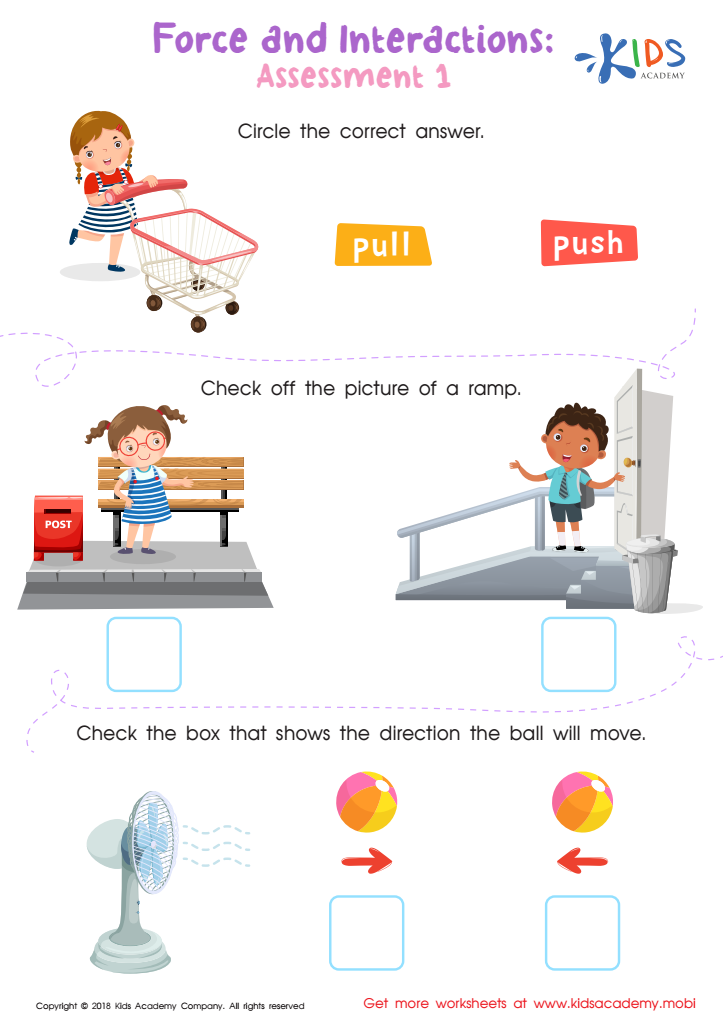Physical Science worksheets activities for 5-Year-Olds
2 filtered results
-
From - To


Force and Interactions: Assessment 1 Worksheet


Force and Interactions: Assessment 2 Worksheet
Physical Science worksheets activities serve as a vital tool in the classroom, enriching student learning and understanding of complex concepts in a tangible and engaging way. These worksheets are not just sheets of paper; they are gateways to exploring the fundamental principles of physics and chemistry, making abstract ideas more accessible and comprehensible for students of all levels.
One of the primary reasons Physical Science worksheets activities are so beneficial is that they offer hands-on learning experiences. Through these activities, students can experiment with real-world applications of theories they encounter in textbooks, thereby solidifying their knowledge through practice. This experiential learning approach helps to demystify scientific concepts, making them easier to grasp and remember.
Moreover, Physical Science worksheets activities cater to diverse learning styles. While some students excel through auditory or visual learning, others find that hands-on activities help them understand and retain information more effectively. These worksheets provide an opportunity for kinesthetic learners to engage with the material in a way that suits their learning style best, ensuring that no student is left behind.
Furthermore, these activities encourage critical thinking and problem-solving skills. As students work through experiments and exercises, they learn to apply logical reasoning, make predictions, and analyze outcomes. This not only enhances their understanding of physical science but also equips them with valuable skills that are applicable beyond the classroom.
Lastly, Physical Science worksheets activities facilitate a collaborative learning environment. Students often work in groups to complete these activities, fostering teamwork and communication skills. Sharing ideas and solutions not only strengthens their grasp of the subject matter but also encourages a sense of community and cooperation among peers.
In conclusion, Physical Science worksheets activities are a cornerstone of effective science education. They provide a dynamic and interactive way to explore complex subjects, accommodate different learning styles, promote critical thinking, and encourage collaboration. By integrating these activities into the curriculum, educators can significantly enhance the learning experience and outcomes for their students.
 Assign to the classroom
Assign to the classroom












